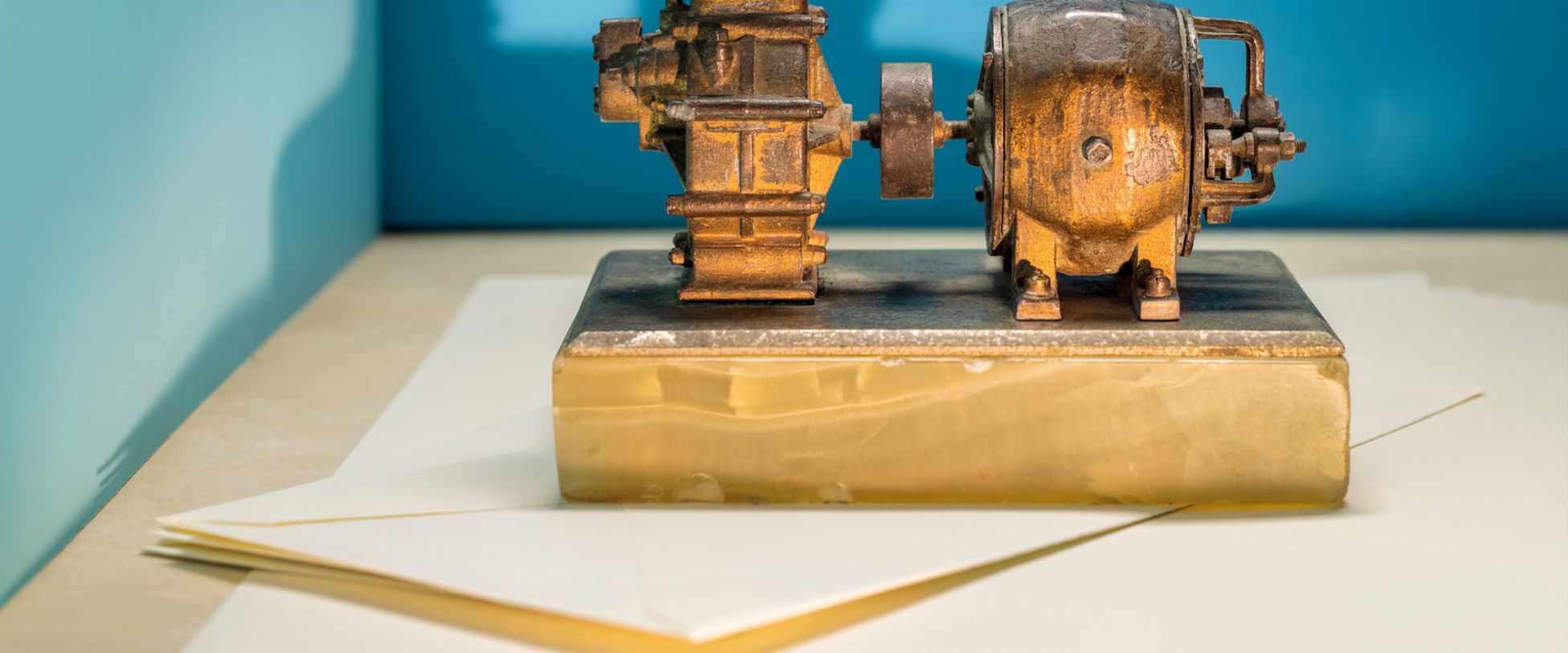Icon: Ferdinand Porsche’s Paperweight
1938. A paperweight in Ferdinand Porsche’s office in Zuffenhausen is a replica of the hybrid drive he developed as company founder. It’s an early harbinger of Porsche’s current electric campaign.
Zuffenhausen, 1938. The office of Ferdinand Porsche in the newly built Porsche plant, now known as Plant 1. Tidy, almost spartan. Not a bit of decoration on the walls. On the desk: Bakelite phone, family photo, letter scale, and inkpot. Legend has it that one other item was present: the paperweight. Bolted to the 13-by-8.5-centimeter steel plate is a replica of the hybrid drive developed by Ferdinand Porsche in the year 1900. On the left is the slim combustion unit, on the right the rounded generator. At the time, it was known as a “gasoline-electric mixed drive.”
The revolutionary thing about it: the combustion engine doesn’t directly power the axle but rather an electric generator, which in turn supplies the wheel-hub motors and accumulators with electricity. Ferdinand Porsche installed the hybrid drive in the legendary Lohner-Porsche Semper Vivus (“always living”) prototype, which he designed for his employer at the time, Vienna-based Jacob Lohner & Co. k.u.k. Hof-Wagen- & Automobil-Fabrik.
With the first functional hybrid vehicle in the world, even greater distances were possible on electric power alone—before the combustion engine had to spring back into action to enable further travel. The paperweight, whose exact creation date is unknown, is among the oldest objects in the Dr. Ing. h.c. F. Porsche AG company archive. Nearly six years ago, it found its way back to Zuffenhausen as part of a larger collection of items and is now—just in time for Porsche’s electric campaign—enjoying some well-deserved notoriety.


